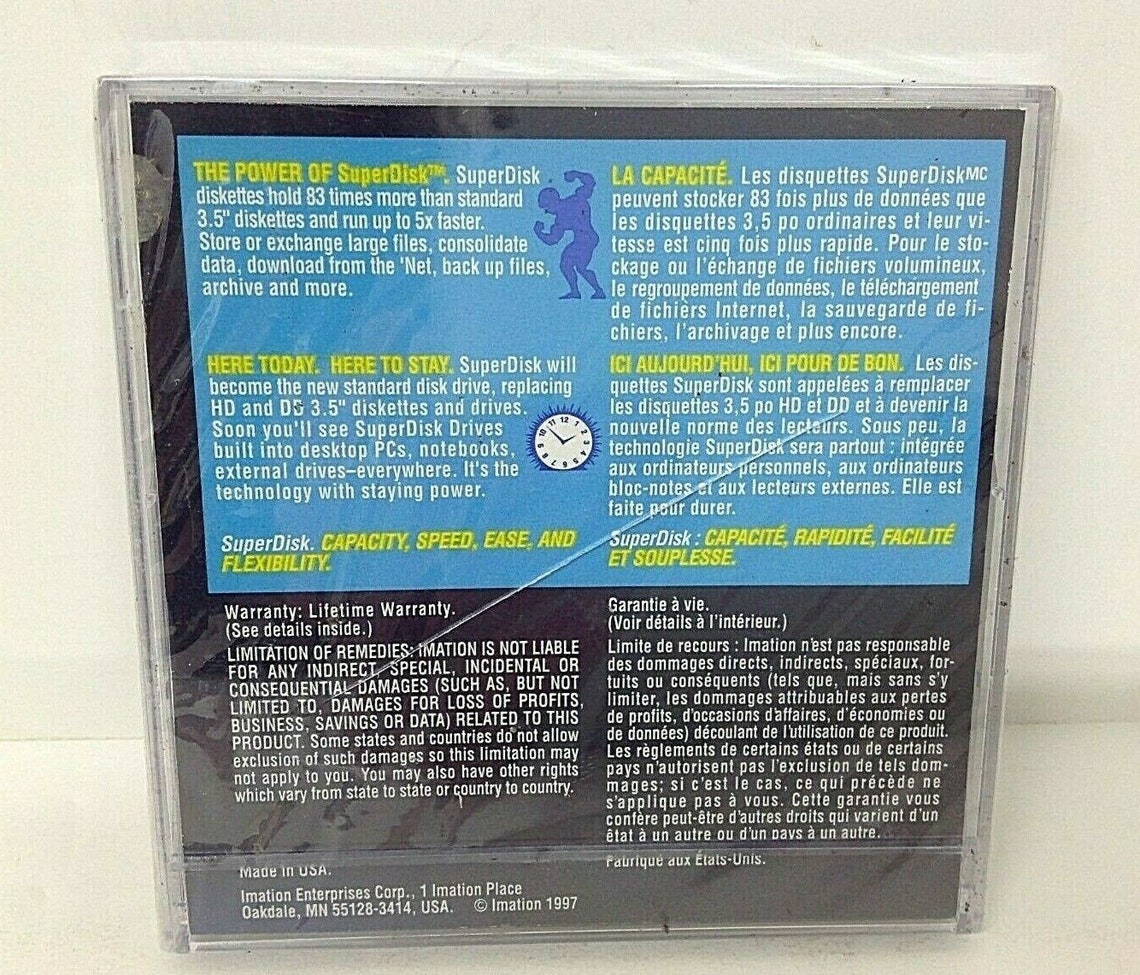
- IMATION SUPERDISK ON IMAC HOW TO
- IMATION SUPERDISK ON IMAC UPDATE
- IMATION SUPERDISK ON IMAC SOFTWARE
- IMATION SUPERDISK ON IMAC DOWNLOAD
- IMATION SUPERDISK ON IMAC MAC
If you use a hub for your connections, if possible try to connect your external drives directly into your Mac–no intermediary. A similar issue is frayed or worn cables, so make sure that your cable is in good condition. Or even if they are recognized, they randomly disconnect without warning or prompting. Loose connections often lead to external drives not being recognized. So check your cable, your dongle (if used), any additional adapters, and the ports on both computers and drive to ensure that they are clear, clean, snug and fit tightly to each other.Ĭheck that the cable connecting to the ports is indeed connected.
IMATION SUPERDISK ON IMAC MAC
A Tight Fit is a Good FitĪnother reason for your Mac not recognizing external drives is a dirty or loose connection between your cable, USB-C multi-adapter, Thunderbolt 3, or other connecting ports.
IMATION SUPERDISK ON IMAC SOFTWARE
This process means that the software “turns” it off before the hardware. The rule of thumb for external drives is always to shut down, eject, or otherwise disable before unplugging. Or just drag the drive icon to the Trash, changing it to an Eject symbol. Options include right-clicking on the icon of your external drive and selecting “Eject device.” Instead of just pulling out drive connections, always perform a safe remove when ejecting external devices. This tip often does the trick! Rejecting the EjectingĪnother common reason is when you remove the drive without first ejecting. If your MacBook is not mounting an external hard drive or flash drive, try plugging in the power cable to the MacBook and reconnecting the drive. Often, our MacBooks don’t put out enough power across the built-in USB hubs and so adding a self-powered hub sometimes solves the problem straight away. If your drive doesn’t allow for an external power source, try connecting the drive to another USB port. If you instead plug the drive directly into a power source (if a power supply is available for your drive,) the external drive usually mounts on its own now that it has sufficient and steady power. This error frequently occurs when the hard disk is not receiving enough power from the port. The same trick works for all types of computers, Windows or Macs, Desktops or Laptops! Power Problems When they try and plug in the USB flash drive normally, their PC’s don’t recognize the disks.īut if they gently slide them into the port in slo-mo, their drives are recognized! Go figure. Strange but true, some users found that their thumb drives work when they plug it in exceptionally slowly. Just make sure you purchase a hub that is compatible with the latest macOS and is self-powered (i.e. If that doesn’t work, replacing it (if necessary) usually fixes the problem. First, try plugging the hub into a different port on your Mac. If the drive is now recognized, the problem is likely the hub. So check if the hub is the problem by plugging the external drive directly into the Mac.

The best (or least problematic) method for connecting external drives So it’s better to follow the recommended path to connect your external device(s) to your Mac. That’s why most USB devices are called plug-and-play. It’s easy to plug things in at random times, and usually, our Macs and MacBooks get it right and recognize everything.
IMATION SUPERDISK ON IMAC DOWNLOAD
IMATION SUPERDISK ON IMAC HOW TO

Use Terminal Commands diskutil list, diskutil info disk, & diskutil eject disk.Run Disk Utility to Mount, Verify, or Repair Drives.
IMATION SUPERDISK ON IMAC UPDATE




 0 kommentar(er)
0 kommentar(er)
